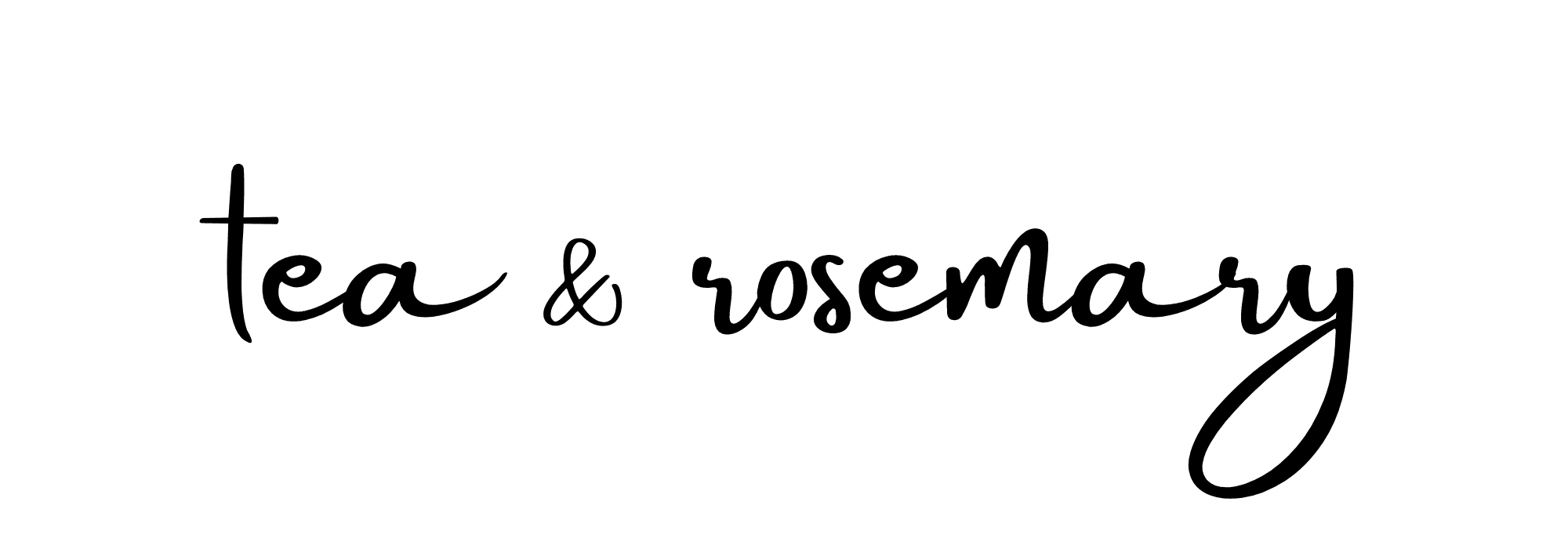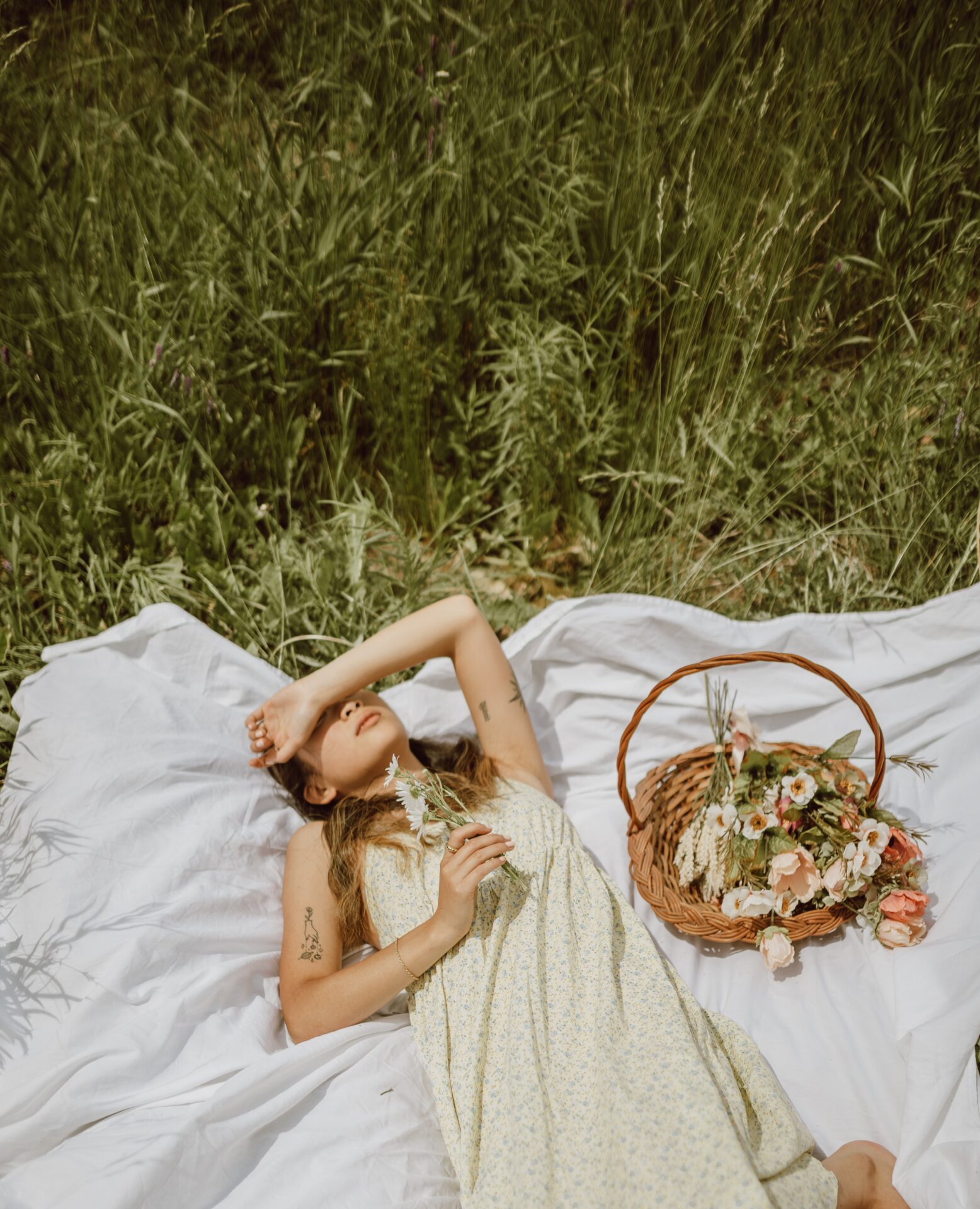On the pagan Wheel of the Year, Ostara marks the first day of Spring. While we observe the Spring Equinox on March 21, Ostara is often celebrated from March 20 to 23.
Ostara is a celebration of the resurrection of Spring and is actually a widely popular holiday. You may have even been practicing Ostara this whole time without even knowing it!
To many, Ostara is a feast day that honors the Spring goddess and Earth Mother. A form of this traditional springtime celebration was practiced by many Pagan cultures throughout history, in tales that are too eerily similar to be mere coincidence.
In this day and age, more and more pagans are coming out of the woodwork and looking for ways to honor these traditions and celebrate the beauty of nature through the sabbats. With this in mind, it’s important to understand all of the symbolism and rituals that are involved in participating in this joyous occasion and truly embracing the energy of this powerful equinox.
What Is Ostara?
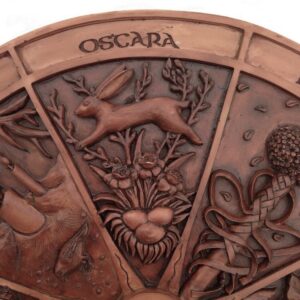
Ostara is a pagan celebration of the Vernal Spring Equinox, which falls on March 21 each year in the Northern hemisphere, and September 23 if you’re in the Southern hemisphere. It is observed as part of the pagan Wheel of the Year. Ostara is the Spring Equinox.
It is at this time that the Horned God is born again, resurrected to wed the Goddess in the never-ending wheel of seasons.
Don’t get it confused! This celebration shares a name with the Germanic goddess of Spring, Ostara, traditionally called Ēostre by the Anglo-Saxons, who bears a similarity to the Canaanite moon goddess Astarte, all from which we derive the name for the modern celebration of Easter. (Phew – that was a mouthful!)
On this special day of the year, night and day are equal lengths, representing a general theme of balance for this regenerative sabbat. We also celebrate the seedlings popping up through the dirt as a sign of rebirth, fertility, and new beginnings. Much like the tulip, we needed the chill of winter to hibernate and regenerate so that we can blossom to our full potential.
The Meaning Of Ostara:
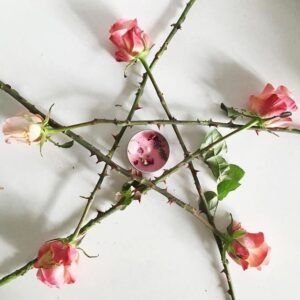
Ostara is a time of planting new seeds, both physically and spiritually. At this time of year during the Spring Equinox, we see new life springing forth, filling us with renewed energy to bring about the best version of ourselves, to create the ideal world that we’d like to see, and to write our own destinies.
It is a time to check-in and make sure that we are taking steps to nurture ourselves, providing our spirits and bodies with healthy nutrients, and cutting out anything that may be interfering with our growth.
With equal parts light and dark, this day is a perfect place of balance within the year. It represents the dualities of nature: masculine and feminine, good and evil, above and below, yin and yang.
The first day of Spring (the Spring Equinox) is also a significant turning point in the year, where light begins to overturn the looming darkness. It brings forth a sense of hope and provides clarity in setting a path for the coming seasons, and gifts a reason to celebrate an Ostara Festival.
Ostara Pronunciation
I want to get to all the good stuff, like fun Ostara rituals and Ostara traditions to try out, but I first think it’s important to know how to pronounce Ostara.
When I first participated in Ostara rituals, I literally had no idea how to pronounce the word. Nowadays we tend to learn most information from the internet, so pronouncing some of these words is tough.
The correct pronunciation is Oh-staa-ruh. The Oh is pronounced just like the word flow, and the a in the other syllables are pronounced just like the a in star – much like you’d imagine.
How To Celebrate Ostara
Whether you are new to your pagan path or a seasoned practitioner, you likely already have some idea as to how to celebrate Ostara.
To Christians, Ostara (or the Spring Equinox) is called Easter, and marks the resurrection of Jesus Christ, rising three days after sacrificing himself for the sins of mankind. If you have ever practiced Christianity, then some of these traditions will surely be familiar to you.
Typically, Ostara traditions revolve around these motives:
- Rebirth, resurrection, and renewal
- Hope and setting intentions
- Planting the seeds for personal growth
- Celebrating divine femininity
Ostara Rituals:
There are so many ways to celebrate the Spring Equinox, so this is a lovely holiday for those that are still carving out their pagan paths and looking for new traditions to practice that honor their ancestry as well as the first day of Spring.
Another thing I love about Ostara is that its traditions are super family-friendly, so you’re sure to find something fun for everyone on this list! It is truly a delightful occasion with immense energy that is best celebrated with others; a joyous Ostara Festival!
It is also a wonderful time to work with the elements, as the energy of Earth reaches out to us in new ways. The newly-born herbs and plants of the season lend energetic properties that we had limited access to in the colder months. Some of my favorite Ostara festival traditions revolve around earthly elements.
1. Painting Decorative Eggs
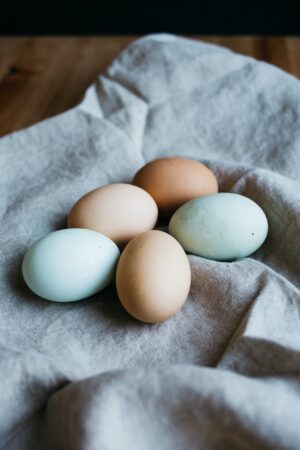
This well-known Easter tradition originated as a way to celebrate Ostara. While many people traditionally dye their eggs, you can also paint them, color on them with crayons, or glue little decorations on them – the possibilities are endless!
2. Plant & Nurture New Seeds
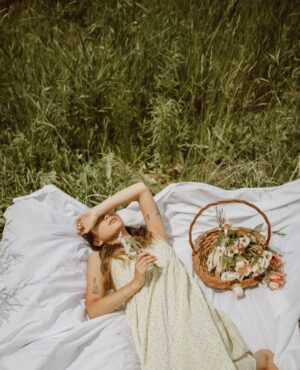
Okay, so we’re not just talking about your physical garden here, but your spiritual garden. This is a great time to plant the seeds of intention and really make steadfast goals for the new year. What would you like to see bloom to fruition in the coming seasons?
If you already incorporated this principle into your Ostara ritual, then you’re in luck! It’s time to check in on your progress and see if the seedlings you planted back then have sprouted! See if you can identify what’s working for you and what isn’t, and adjust your goals and methods as necessary. You are in control of your destiny!
But while we’re on the subject – if you do have a garden or enjoy raising houseplants from seeds, then this is a great time to get those seedlings started and prepare your pots and soil for the upcoming season. Ostara is about celebrating the fertility of the Earth, so let’s do just that and make the world a little greener.
3. Baking Ostara Bread & Hot Cross Buns

As we bake our Ostara creations and watch the yeast rise, we are reminded of the newly growing plants and herbs sprouting up out of the ground. The finished loaf, a product of the last year’s harvest, is also baked with a wish that the next season will be even more abundant.
These loaves of bread can be decorated with flowers, fruit, vegetables, and peppers, laid carefully on top to create beautiful springtime works of art. You can also bake hot cross buns, which are symbolic of the Celtic cross and the pagan Wheel of the Year.
4. Hunting For Eggs
This is another fun tradition that the kids love! Did you know that hunting for eggs started as a pagan practice?
Traditionally, we hard boil the eggs that we intend to dye and decorate and then eat them once they’re collected and the egg hunt is complete.
If you can’t have boiled eggs in your house for whatever reason, then chocolate eggs are also fun to find!
5. Create Eggshell Candles
This is a super fun craft and a great way to reuse your decorated Easter eggs or any that may have cracked during your initial dye job.
You can gather wax from crayons or old candles, and then shred them into small strips using a cheese grater. Place the strips in a can and heat the can in a saucepan of water on low to medium heat.
Attach the wicks with a tiny dab of heated wax before filling the egg up with enough wax to form your candle. Use an egg carton to hold your candles safely in place while they dry.
6. Spring Cleaning
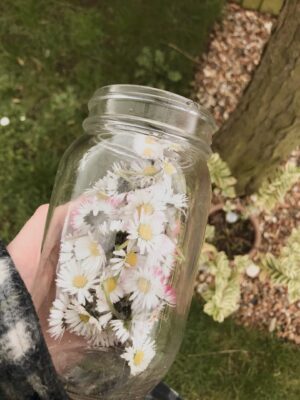
Yet another thing that you may not have known was a pagan ceremony – spring cleaning is a common practice among pagans and witches to restore fresh energy to the home.
The act of cleaning and decluttering is a simple blessing that anyone can bestow on their home regardless of spiritual practice or belief.
7. Create A Springtime Bouquet
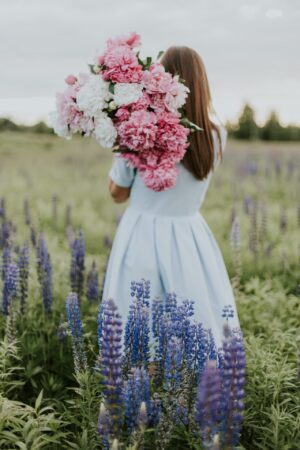
Once you’ve cleansed your home, welcome springtime inside by picking some newly-blooming perennials and arranging a lovely bouquet. The scents wafting through the air will purify and energize your home for the coming year.
Be warned! Do not bring lilies into your home if you have cats! All parts of these flowers are extremely toxic and can be lethal if ingested by felines. Your dogs may have a negative reaction as well, so it’s best not to risk it.
8. Take A Walk
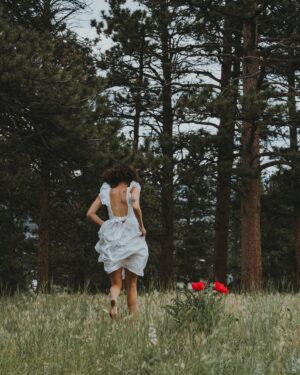
Enjoy a relaxing walk in nature to welcome the new life brought by the change of seasons. Observe the new blooms, listen to the buzzing insects and the sound of the winter snow dripping from the trees, and give thanks for all that Mother Nature has birthed for us.
This is a great time to perform a grounding ritual, to collect ingredients to decorate your altar or harvest spell components. Be sure to give thanks to the Earth for anything that you bring home.
Ostara Symbolism
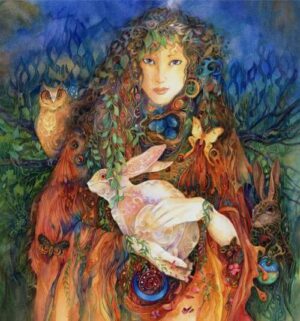
The Spring Equinox is recognized by the life that it brings, and its symbols can be seen in everything from the fresh buds on the trees to the new blades of grass sprouting up from the cold ground.
Bees, ladybugs, butterflies, and other insects that have been in hibernation during the cold months start to buzz about again and sing their choruses. They too symbolize this period of rebirth according to Ostara traditions.
However, there are other more specific symbols that you can employ if you want to do an Ostara ritual or spell. Here are some of the most common Ostara symbols:
Colors: White, pink, sky blue, light yellow, spring green, and lavender
Crystals: Aquamarine, moonstone, rose quartz
Herbs: Spring flowers (crocuses, daffodils, lilies, tulips, etc.), lemongrass, thyme, tarragon, lemon balm, red clover
Trees: Birch, ash, alder, willow
Altar Decorations: Brightly colored altar cloths, decorated eggs or a basket of eggs, freshly-picked flowers, feathers, items that represent balance (i.e a scale, black and white candles, god & goddess statues), seeds, herbs, or plants.
Associations: Setting new intentions, fertility, hope, balance, and inner harmony
The Easter holiday celebrated by Christians today is almost unabashedly filled with Pagan symbolism, the most famous of which is the hare and the egg.
Separately, the two symbols are powerful in and of themselves. The hare has always been a revered symbol of the moon, with ties to lunar goddesses such as Freya, Hecate, and the Chinese goddess Chang’e. Just like the Ostara goddesses, the egg symbolizes fertility, hope, and rebirth.
But what significance do these seemingly unrelated items have with one another, and why do we see them endlessly paired together during the springtime months to this very day?
The Hare & The Egg
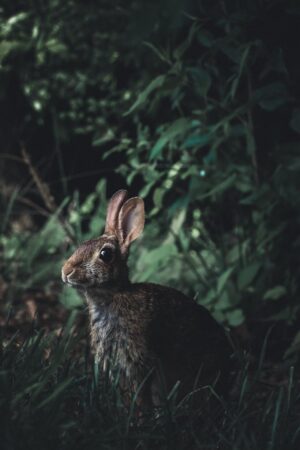
In one folk tale, all of the animals of the forest were preparing for a great party, and with it, the arrival of a great goddess. In anticipation of her arrival, the animals scurried to find suitable gifts for the goddess – everything from the mundane to the absolutely wondrous.
Seeing all the gifts and trinkets that the other animals could provide, the hare ran home to find something special that the goddess might deem worthy. He searched all his cupboards, under the bed, in the pantry, and all over his house – but he had nothing.
Until, on the very last shelf, the hare found a single egg. The last of his possessions, he carefully took it down and decorated it for the goddess.
Once all the animals had presented their own gifts – glittering jewels, silver, and gold – the hare nervously presented his crafty little egg. She took the egg from him, smiled, and appointed him a special place in her company due to his generosity and thoughtfulness.
Another legend is that the goddess Ostara once found a wounded bird on the ground, which she saved by turning it into a hare. The hare, however, still laid eggs like a bird, and so would decorate and gift these eggs to Ostara as a token of thanks.
A Time Of Fertility In Faith
Even though these rituals are still prevalently practiced today, it’s unfortunate that they’ve been appropriated and disfigured by the Christian faith and bastardized from all that they once represented.
It’s clear that many of these traditions have been practiced by cultures from every corner of the world, and we welcome a time when pagan pantheons can be acknowledged and celebrated in the way that Christianity has been for years.
As many new pagans are welcomed home to their paths in the modern age, I look forward to this new era blossoming soon. Regardless of your spiritual practice, I wish you a blessed Ostara.
I hope this gives you ideas for Ostara traditions, rituals, and ways to celebrate this wonderful Sabbat!
